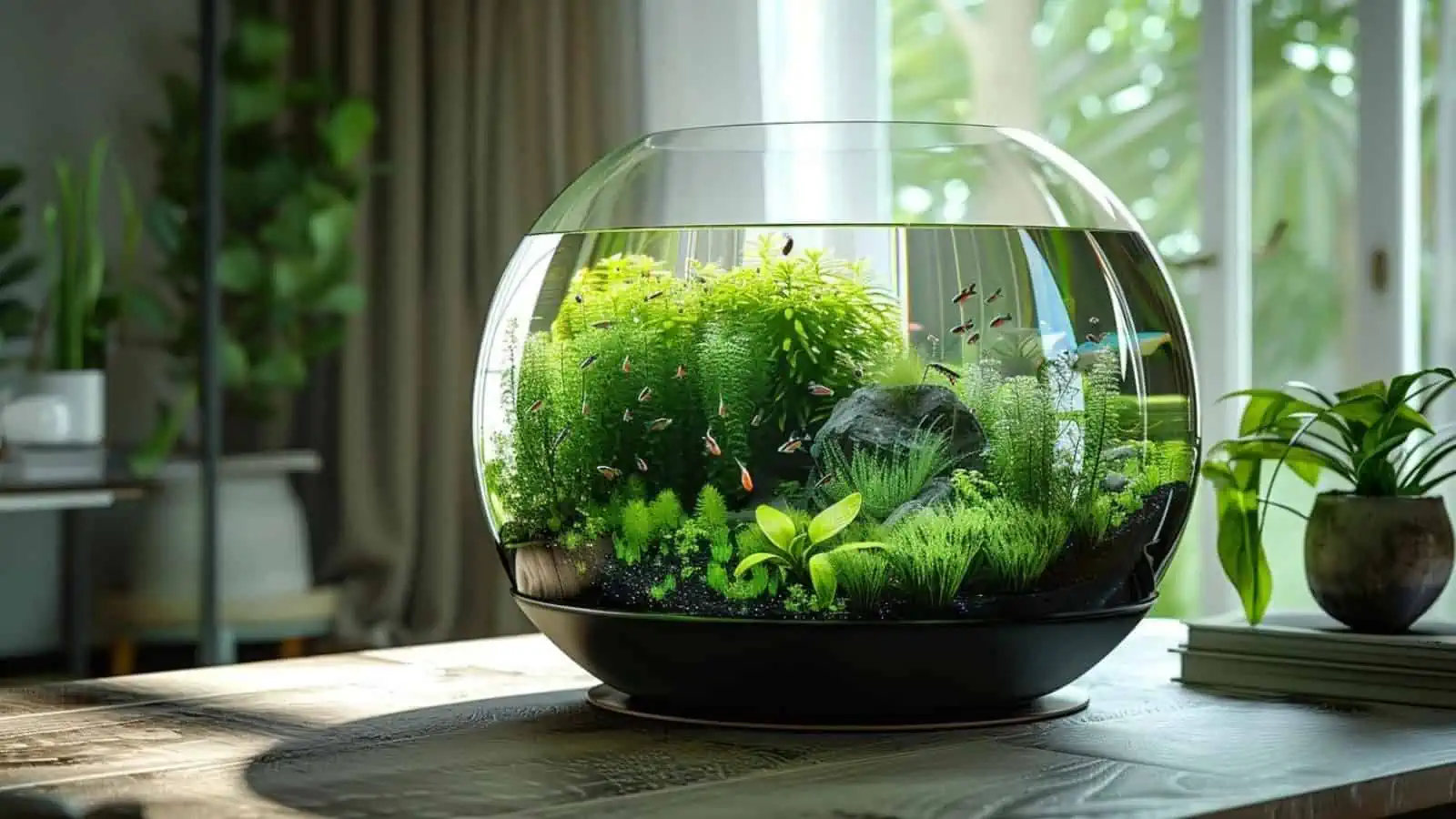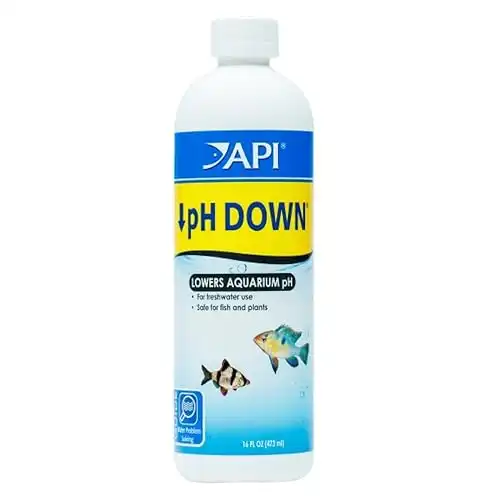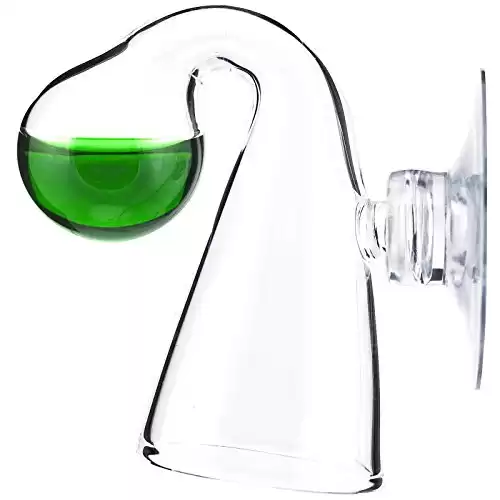Knowing how to achieve the right water pH for a particular community of fish is a skill that separates fishkeeping pros from the rest.
But what if your water pH is inconsistent and keeps fluctuating? Because unstable water pH can be dangerous to fish health and tank ecology, it’s important to know how to correct it.
Here we’ll identify the chief causes and suggest some effective solutions to this awkward problem.
Key Takeaways
- Water pH most often becomes unstable due to poor water quality in small aquariums that are overstocked with too many fish.
- Other causes for a fluctuating pH include the presence of tannins, alkaline materials, and carbon dioxide levels.
- While there are products that can balance water pH, it’s better to identify the source of the problem and correct it for conditions to stabilize in the long run.
- Whatever causes unstable water pH, the problem is always made worse in a tank that’s too small. Medium-sized aquariums are easier to manage than small ones!
The Importance of Stable Water pH

To remain in good health, fish need water conditions that remain stable within the ideal range for them. While temperature, oxygen levels, and other parameters are crucial, water pH is very important, too.
Each fish species has its own preference for water pH. While South American species like neon tetras and angelfish prefer soft, acidic water, East African cichlids and many snails need hard, alkaline water to thrive.
If the water pH is not in the correct range, your fish could suffer ill health including serious skin conditions and gill irritation. If conditions are not corrected, your fish might even die.
At the same time, water pH shouldn’t be changed too suddenly. Water conditions must be always changed gradually to avoid shocking your fish. That’s why sudden pH fluctuations are so important to avoid.
A Word of Caution – Avoid Changing Water pH Too Suddenly!

While every fish species has its preferences for its ideal water parameters, it’s even more important that water conditions are not changed too suddenly.
If water temperature, hardness, or pH changes too quickly, your fish may become stressed, leaving them in a highly vulnerable condition for diseases to strike. In extreme cases, the shock of sudden changes may even kill your fish directly.
When attempting to adjust your water pH, be careful not to do it too quickly. Avoid changes of more than pH 0.2 for each day.
Water pH Fluctuations in the Wild
When considering fish health, it’s always a good idea to refer back to their wild habitat to find out the conditions in which they’ve evolved to thrive.
While some aquarists may attempt to maintain a perfect, stable pH at all times, many fish come from environments where water pH changes slightly through the year.
In habitats such as rainforest pools, water may become more acidic if there is seasonal leaf fall from the dead leaves that release tannins and acidify the water. Monsoons and dry seasons can also have their own effect.
Remembering this, you can relax about pH changing by up to 0.5 degrees over longer periods. It is, however, recommended to diagnose the problem and correct the issue if pH levels are fluctuating more rapidly.
Leading Causes of Water pH Fluctuations and Their Solutions
Acidic or Alkaline Tap Water

Before deciding which type of fish you’d like to keep, it’s important to test your tap water. Because each locality has a different water chemistry, the type of tap water you have can make a big difference to the type of fish that will be most suitable.
If you decide to attempt an alkaline aquarium when you have acidic water, or an acidic aquarium when your tap water is alkaline, you face a significant challenge: Every time you add new water to your tank, the tank’s water pH will change.
In this way, pH fluctuations are sometimes simply caused by adding tap water that doesn’t match your aquarium. Use a pH test kit to compare your tap water to the water in your tank and, if necessary, adjust it before you add it to the tank.
The Solution
Tap water pH can be quickly and easily increased by adding bicarbonate soda to it. Decreasing the pH of tap water efficiently is a little more tricky and usually requires a purpose-made product such as ‘API pH Down’.
- Safely lowers pH in freshwater aquariums to desirable levels.
- Fast-acting, concentrated, colorless and easy to use.
- Phosphate- and nitrate-free, so it should not encourage algae growth.
Additionally, you can neutralize water via reverse osmosis, although the RO unit necessary for that requires significant investment and is not typically used for freshwater tanks.
Tannins in the Water
Another way that aquarium water can keep becoming acidic is by the presence of tannins. Tannins are acidic water-soluble compounds that turn water amber-brown. They are released into the water from organic materials such as driftwood, leaf litter, and peat.
Some aquarists intentionally introduce tannins for the attractive color that they turn the water and the acidic environment it provides for the appropriate fish. These specialist acidic setups are sometimes known as ‘black water tanks’, which you can learn more about, here.
If you’re trying to achieve alkaline water, however, tannins will prove detrimental to your water chemistry.
The Solution
If you’d like to remove tannins from your aquarium, first of all, remove any items that are releasing them. Once again, we’re namely talking about peat, leaf litter, or driftwood.
Once the items are removed, install a carbon filter to remove the remaining tannins that are already in the water. This should clear the water and raise its pH accordingly.
To read more about how to remove tannins from your aquarium, be sure to check out our dedicated guide.
Alkaline Substrate and Decor

On the opposite end of the spectrum, aquarium water can sometimes become too alkaline for certain types of fish when there’s a calcareous, alkaline substrate or décor that raises pH levels too high.
Substrates that contain crushed coral are especially renowned for this effect, but several pieces of limestone or coral as décor will have a similar effect.
The Solution
If you suspect that calcareous materials in your tank are constantly pushing your pH too high for your fish, you probably need to remove them.
Research the replacement gravel you’re buying carefully to make sure it doesn’t contain crushed coral. Once calcareous materials are removed, the pH should reduce substantially.
High Nitrate Levels
Nitrates are a natural part of every aquarium ecosystem, and small amounts are necessary for healthy plant growth. However high nitrate levels need to be kept in check.
Excessive nitrate levels (above 20 ppm) are directly harmful to fish and invertebrates, can cause algae blooms, and are also a sign of poor water quality. Additionally, excessive nitrates make the water more acidic, lowering its pH.
The Solution
The best way to reduce nitrate levels is through proper tank management. Clean your aquarium regularly (every 1-2 weeks) by vacuuming the gravel, cleaning the filter, and performing partial water changes.
Frequently remove any decaying organic materials such as uneaten fish food, dead leaves, dying plants, and algae that increase nitrate levels. Most importantly of all, avoid overfeeding.
With proper maintenance, nitrate levels should begin to drop and pH levels will increase and stabilize.
Carbon Dioxide – An Acidifying Agent
Many aquarists don’t realize that dissolved carbon dioxide levels in the aquarium have a significant effect on pH. By creating carbonic acid, carbon dioxide (CO2) acidifies the water, bringing the pH down.
In small planted aquariums, CO2 levels can produce a measurable difference in pH levels between day and night. During the day, when live plants are absorbing CO2, pH increases. During the night, however, when both fish and plants release CO2, carbonic acid increases, lowering the pH.
High CO2 levels and the acidifying effect they create can be especially problematic in tanks that are too highly stocked with fish or don’t have sufficient aeration or gas exchange at the water’s surface.
The Solution
If you’d like to monitor your tank’s CO2 levels, you can buy a specialist piece of equipment called a drop checker.
- Quality Guaranteed: The high-quality glass CO2 checker.
- Complete Kit: The highest quality glass drop checker, suction cup, and a 60ml bottle of 4dkh/pH reagent solution.
- Essential Item: This helps you to keep a constant check on CO2 levels in the water.
If it seems that high CO2 levels are indeed to blame for acidic water, try to increase aeration by installing an airstone, or increasing surface agitation. Aquarium spray bars and lily pipes are especially useful for this purpose.
If overstocking your tank is to blame, your best bet is to remove some of the fish or invest in a larger tank.
Even though this may be inconvenient, remember that you’re much better off having fewer fish that are flourishing health than too many fish that are suffering from unstable water parameters and poor health.
A Tank That’s Too Small

As we’ve already mentioned, all of the above causes of water chemistry fluctuations are amplified considerably in small tanks.
Although beginners often opt for small tanks thinking that they’ll be easier to manage, nano tanks are actually notorious for unstable water chemistry and require more skill to maintain.
The Solution
If you’re new to fishkeeping or are struggling with unstable water parameters, I’d always recommend going for a medium-sized aquarium that’s at least 20 gallons in capacity. Medium-sized tanks also have the great advantage that they allow you to keep schooling fish that smaller tanks really aren’t suitable for.
With more water, your tank has a much greater buffering capacity to balance out any fluctuations in pH, temperature, or water chemistry issues. Larger tanks are more forgiving, and tend to allow you to learn from mistakes without any disasters happening occurring!
One Last Word of Caution
Before we close, it’s worth reinforcing our earlier point about not changing the pH too quickly.
While purpose-made products and household ingredients like baking soda can lower or raise water pH very effectively, they often do so more abruptly than is beneficial for your fish.
Remember that in aquariums, treating the source of the problem is almost always better than trying to change the symptoms. Good luck!




